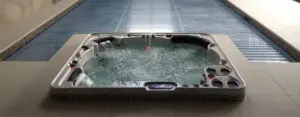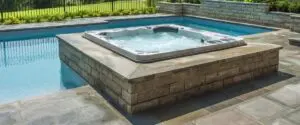September 23, 2021
Category: Swim Spa
Did you know that swimming for exercise is one the most effective ways to work out? It’s great for those who want to become more active, regardless of age or ability. Swimming on a regular basis can help to lower the risk of chronic diseases like heart disease, type 2 diabetes, and stroke. It can also improve your mood and help you maintain a healthy weight. But how good is your swimming technique? Ensuring your form is spot on will help you move faster through the water and prevent you from injuring yourself when in the pool. Here are our top tips on how to improve your swimming technique.
Don’t swim with your hands
When swimming, grab the water with your entire forearm and hand, keeping your forearm at a right angle to your upper arm, and dig the water as if you were gathering sand. Maintain a broad, flat, strong grip with your hands. You’re anchoring your arm in the water and dragging your body over it rather than pushing it through.
Heavy rotations
Each stroke should start with your leading arm entering the water with the low side of your body effectively pointing to the bottom of the pool. The high side of your body should be lifted, and the arm that just ended its stroke should be getting ready to come back to the water.
Keep your head down
Ensure you keep your head down when swimming to keep your torso high, reducing the strain on your neck and lower back, whilst cutting drag.
Find your path
Fewer strokes are preferable in the pool. Your objective should be to cover a lot of ground with each stroke. Continue to glide forward with one arm forward and the other back as your pull yourself towards the other end of the pool.
Allow your feet to drag
Transforming your feet into fins is key to a good swimming technique. Momentum is key, your legs should be tense and scissor you through the water, while your feet remain supple. This will help them flex on the downstroke of each kick, giving them more power and assisting you in twisting your body along the centre axis.
Make every breath count
Before taking a fast, complete breath on the high side, emphatically release the air from your lungs (all of it, not just 90%). If you’re new to swimming, you should breathe after each stroke, but as your endurance increases, switch sides and breathe after three strokes.
The Hot Tub and Swim Spa Company offers an extensive range of swim spas that fit all needs and specifications. From our ExecutiveTrainer Swim Spas to the AquaSport Range, we’re sure that we have a swim spa for your every training need. Get in touch with a member of our team to discuss which swim spa fits your requirements today on 0208 300 4003


